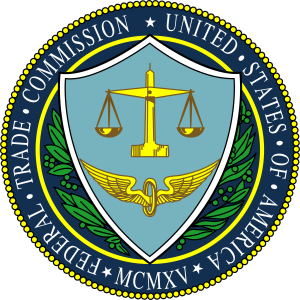 “Baby it’s okay, you can Google my name.” This line from T-Pain’s hit, “Bottlez,” became a focus in a recent Ninth Circuit trademark case on my favorite intellectual property issue: genericide. Among other evidence, the court considered if T-Pain’s use of “Google” showed that the Google trademark had become genericide’s latest victim. Genericide occurs when the public appropriates a trademark and begins using it generically for a type of goods or services, as opposed to a source of goods or services.
“Baby it’s okay, you can Google my name.” This line from T-Pain’s hit, “Bottlez,” became a focus in a recent Ninth Circuit trademark case on my favorite intellectual property issue: genericide. Among other evidence, the court considered if T-Pain’s use of “Google” showed that the Google trademark had become genericide’s latest victim. Genericide occurs when the public appropriates a trademark and begins using it generically for a type of goods or services, as opposed to a source of goods or services.
The “Commander-in-Tweet” and the First Amendment
Can you violate the First Amendment by blocking people from your Twitter account? According to the Knight First Amendment Institute, it’s possible if that account is @realDonaldTrump.
 As we have mentioned before, Donald Trump’s Twitter habit has been a large part of his public persona in recent years. Unsurprisingly, his Twitter usage has continued to play a role in his presidency, at times even shaping the news cycle. In fact, the President’s tweets have garnered the attention of everyone from the writers at SNL to world leaders. The tweets even received a satirical “popup” library to commemorate Trump’s 140-character musings.
As we have mentioned before, Donald Trump’s Twitter habit has been a large part of his public persona in recent years. Unsurprisingly, his Twitter usage has continued to play a role in his presidency, at times even shaping the news cycle. In fact, the President’s tweets have garnered the attention of everyone from the writers at SNL to world leaders. The tweets even received a satirical “popup” library to commemorate Trump’s 140-character musings.
I, TweetBot: Are Fake Users Social Media’s Dirty Little Secret?
 President Donald Trump loves to tweet. Although he has been a prolific tweeter since his days as a reality TV star, during his presidential campaign and subsequent time in office, President Trump has taken the “Art of the Tweet” to new heights. The media, in return, has done its part in slicing, dicing, mincing, chopping, deconstructing, and otherwise analyzing President Trump’s Twitter use six ways to Sunday. (Covfefe, anyone?)
President Donald Trump loves to tweet. Although he has been a prolific tweeter since his days as a reality TV star, during his presidential campaign and subsequent time in office, President Trump has taken the “Art of the Tweet” to new heights. The media, in return, has done its part in slicing, dicing, mincing, chopping, deconstructing, and otherwise analyzing President Trump’s Twitter use six ways to Sunday. (Covfefe, anyone?)
Recently, though, it’s not just the content of President Trump’s tweets that has garnered attention. It’s also his audience.
“Tantrums” Aside, the Law Leans Toward the Employee in Issues of Social Media and Free Speech
 Whether or not your friends and family get a kick out of your misery at work, that online post of yours might tick off your employer. But what rights do employers have to restrain their employees from complaining about them online? Can employers punish employees for posting their grievances online? How do courts differentiate between “protected” and “tantrum” posts? What is the Government’s view on employees’ social media postings? In 2011, Pier Sixty LLC fired Hernan Perez for labeling his supervisor a “nasty M.F.” and using similarly profane language against his supervisor’s family in a Facebook post that ended with a plea to “Vote YES for the UNION.” In a 2016 decision, the Second Circuit enforced the National Labor Research Board’s (NLRB) decision and found that the employee was protected under the National Labor Relations Act (NLRA) because the post was in relation to a union-related activity.
Whether or not your friends and family get a kick out of your misery at work, that online post of yours might tick off your employer. But what rights do employers have to restrain their employees from complaining about them online? Can employers punish employees for posting their grievances online? How do courts differentiate between “protected” and “tantrum” posts? What is the Government’s view on employees’ social media postings? In 2011, Pier Sixty LLC fired Hernan Perez for labeling his supervisor a “nasty M.F.” and using similarly profane language against his supervisor’s family in a Facebook post that ended with a plea to “Vote YES for the UNION.” In a 2016 decision, the Second Circuit enforced the National Labor Research Board’s (NLRB) decision and found that the employee was protected under the National Labor Relations Act (NLRA) because the post was in relation to a union-related activity.
Executive Order 13800 – Strengthening the Cybersecurity of Federal Networks and Critical Infrastructure
 President Donald J. Trump signed Executive Order 13800 titled “Strengthening the Cybersecurity of Federal Networks and Critical Infrastructure” on May 11, 2017, his thirty-fifth executive order since taking office.
President Donald J. Trump signed Executive Order 13800 titled “Strengthening the Cybersecurity of Federal Networks and Critical Infrastructure” on May 11, 2017, his thirty-fifth executive order since taking office.
An 8-0 Decision by the U.S. Supreme Court in TC Heartland v. Kraft Foods Limits Venue Shopping in Patent Suits
Today, May 22, 2017, in the TC Heartland v. Kraft Foods opinion written by Justice Clarence Thomas, the U.S. Supreme Court held that the proper venue for a patent infringement lawsuit is (1) the state of incorporation for the defendant, or (2) a district where the defendant has committed acts of infringement and has a regular and established place of business. The Court held that for purposes of the patent venue statute, 28 U.S.C. §1400(b), a domestic corporation “resides” only in its State of incorporation, rejecting the argument that §1400(b) incorporates the broader definition of corporate “residence” contained in the general venue statute, 28 U.S.C. §1391(c).
Banging the Disclosure Drum: The Once Blurry Line between Advertiser and Influencer Continues to Come into Focus
 As we have written about time and time again, and as celebrities and influencers gain more and more followers on social media platforms such as Instagram, Snapchat and Twitter, they must exercise care when endorsing the use of sponsored products and services. Under the current legal landscape, posting endorsements on social media can not only affect the user’s brand, it can also expose one to legal liability. For its part, the Federal Trade Commission provides clear regulations regarding the posting of endorsements for products or services. When a product or service is featured on a social media post, and the poster is receiving some sort of compensation for the post (including receiving the product/service at a discount or for free), a poster may have to disclose that he or she is somehow being compensated, if the audience’s knowledge of the sponsorship would affect the credibility they give the poster’s endorsement. The FTC’s website contains common Q&As regarding when an endorsement must be disclosed on social media and how it must be done. Continue Reading →
As we have written about time and time again, and as celebrities and influencers gain more and more followers on social media platforms such as Instagram, Snapchat and Twitter, they must exercise care when endorsing the use of sponsored products and services. Under the current legal landscape, posting endorsements on social media can not only affect the user’s brand, it can also expose one to legal liability. For its part, the Federal Trade Commission provides clear regulations regarding the posting of endorsements for products or services. When a product or service is featured on a social media post, and the poster is receiving some sort of compensation for the post (including receiving the product/service at a discount or for free), a poster may have to disclose that he or she is somehow being compensated, if the audience’s knowledge of the sponsorship would affect the credibility they give the poster’s endorsement. The FTC’s website contains common Q&As regarding when an endorsement must be disclosed on social media and how it must be done. Continue Reading →
News of Note for the Internet-Minded (4/12/17) – Inscrutable Algorithms, Adaptable Botnets and Weibo Backlash
Internet Vino Veritas: Rules and Guidelines for Social Media Efforts Related to Alcohol Sales
Every day, businesses extend more of their services to the internet in an effort to cater to millennials and upcoming generations of consumers. Those in the wine industry are no exception. Though somewhat slow to adopt online and digital marketing in the beginning, businesses in the alcohol industry are catching up. One site called the Tasting Room, touted as the fastest growing wine club in the country, offers an online questionnaire that can determine affordable wines that a customer supposedly would like and then deliver them directly to the customer’s door. Part of the assessment involves receiving a tasting kit for the consumer to taste and rate and then completing a survey on the company’s website. Tasting Room’s algorithm then determines appropriate wine selections for you. The customer also rates subsequent shipments so that the wine selections become even more finely tuned over time.
Whack a Meme: Is It Possible to Contain (Let Alone Stop) the “Crying Jordan”?
 Almost everyone (even my parents) has seen the Crying Michael Jordan meme popping up around the internet and social media. Crying Jordan has appeared in the standard meme form of photoshopped images and gifs but has also inspired Halloween masks and even customized Air Jordan sneakers. TMZ reports that Jordan doesn’t have a problem with it, as long as no one uses it to “promote their commercial interests.” But what if he changed his mind or someone started using it for commercial gain? Could Jordan protect himself against “unauthorized memeing”?
Almost everyone (even my parents) has seen the Crying Michael Jordan meme popping up around the internet and social media. Crying Jordan has appeared in the standard meme form of photoshopped images and gifs but has also inspired Halloween masks and even customized Air Jordan sneakers. TMZ reports that Jordan doesn’t have a problem with it, as long as no one uses it to “promote their commercial interests.” But what if he changed his mind or someone started using it for commercial gain? Could Jordan protect himself against “unauthorized memeing”?






